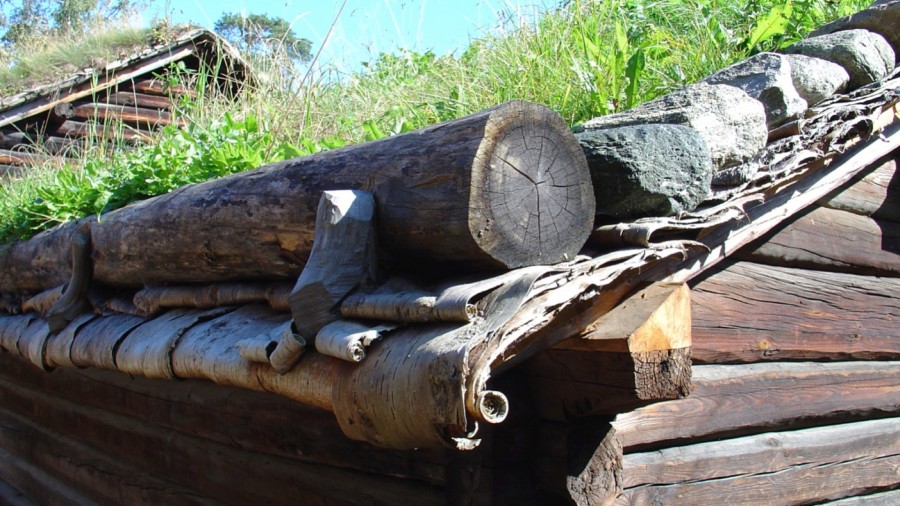Log cabins, in the style of Scandinavian houses, have recently come to the fore in our online community. A number of people have joined, wanting to construct a green roof on these types of buildings.

Traditional Green Roof – Scandinavia.
The image above quite simply it shows that a roof must be able to hold the soil but it must also allow water to be able to drain off a roof.
Log Cabins – the Traditional Approach
What we can see here in the picture is:
- pieces of birch bark placed under the roof to provide waterproofing
- a hooked pole that runs up to the rear of the roof (where there is another hook) to hold
- the large pole along the from which retains the soils
- Stone edge detail running along the side of the slope to help retain the soils
In effect green roofs are that simple.
A Modern Approach: an interpretation of the Traditional
All modern green roofs are just a re-invention of this approach. Our online guide follows these principles to the letter. Birch bark is replaced with a conventional waterproofing treatment. This is not necessarily natural. All modern waterproofing is petrol based to a lesser or greater extent. There, however, currently waterproofing being developed in Scandinavia that is pine resin based. When this comes onto the mainstream market then green roofs on log cabins can be completely built without using any petrol based products.
Our front and side detailing retains soil and allows the water to egress. We have also develop a gabion edge detail for the front of a green roof, which is more in keeping with the pole along the front in the image above.

Trees on a Turfed Green Roof – Robert Snow
What maybe popular might not be what you want
The picture above is one of the most popular green roof images on the internet. However this traditional turf roof on a log cabin is now uninhabited. One of the reasons is the trees are probably about to overload the roof. The last thing you want a green roof to do is collapse! So enjoy the picture but make sure your log cabins are designed to take the weight of your green roof.